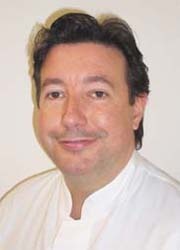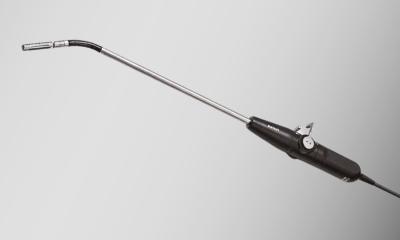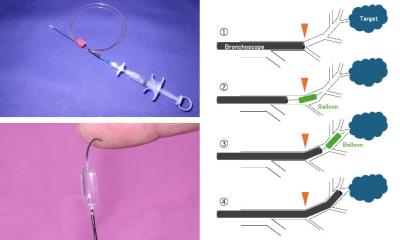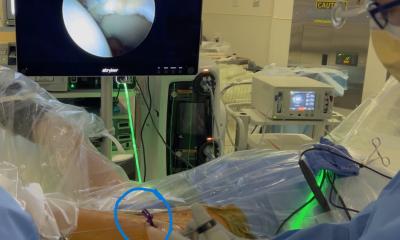Water jet dissection
Five years ago, surgeons at the Lukas Hospital in Neuss, Germany, used water jet dissection for visceral surgery for the first time. Dr Bernhard Lammers, head of the hospital's General and Visceral Surgery Department, describes subsequent experiences with this procedure and possible future developments

‘Water jet dissection enables us to separate organ structures using a water jet of around 0.1cm diameter. This anatomically suitable tissue penetration allows for different physical characteristics, for example, structure, firmness and elasticity of the organs,’ Dr Lammers explained. ‘For instance, the liver, with its soft parenchyma, is dissected with a water jet pressure of 30 bar, which means the blood vessels in this area are preserved and can be supplied separately. Depending on the type of tissue the water jet pressure can be varied between 20 and 40 bar. In the beginning we hoped to use this method for the clean, blood-conserving preparation of malignant tumours, particularly in resections of the liver, kidney and rectal tumours. Over the years, the method has fulfilled all our expectations - and more.
Advantages
‘One advantage lies in surgery for liver metastases. With many metastases in the left and right lobes of the liver we can now carry out larger resections, thanks to this tissue-preserving type of dissection, and we therefore we can remove more liver metastases. The incredible precision in the removal of malignant cells and preservation of healthy tissue achieved with the water jet has astonished us. The fact that out of a total of 100 operations the blood supply to the liver had to be stopped during only one of those operations is further proof of how precise the method is. In all other cases, the liver’s arterial supply was maintained throughout the whole surgical procedure. We also have been able to significantly lower the amount of blood loss occurring during surgery. On average, patients lost around 350ml, and around 80% of our tumour patients did not need any blood transfusions or plasma. This presents an enormous relief for the patients’ organs.
‘We have also found that, in general, patients recover from this type of surgery much faster. In addition, there is definitely a lower rate of infectious complications. Problems with liver function or liver failure hardly ever occur. A further positive effect has been seen in surgery on rectal carcinoma. As the nerves are protected during this type of surgery, 97% of patients who underwent resection of the rectum with total excision did not require a catheter. Before the introduction of water jet dissection around 50% of patients left hospital with a catheter! We can say with confidence that due to water jet dissection the healing process is faster and patients are mobilised quicker. Apart from the obvious health benefits to the patients, there is also a cost-saving element as patients’ hospital stays are reduced.’
The future
‘Over the last few years this method, and its uses, have developed and evolved continuously. Apart from visceral surgery, the method is now also increasingly used in urology, for instance in prostate surgery. We continuously exchange information and experiences with colleagues in different medical fields, so there are other developments, as well. We are always curious to see what other positive surprises this procedure will have in store for us.’
Interview: Denise Hennig, European Hospital
Waterjet surgery supplements ERBE’s operating theatre product range
ERBE’s core competence is electrosurgery. For about five years ERBE Elektromedizin GmbH has extended its product portfolio to include waterjet technology, which enables surgical interventions with optimised preservation of nerves and vessels.
Waterjet surgery has become established in many surgical disciplines and offers not only extremely selective dissection but many other advantages. In addition to low intra-operative blood loss, operating times are reduced, particularly in general, visceral and orthopaedic surgery.
Full details: www.erbe-med.de
30.08.2006





